Advertisement
Field Guide to Boston
How rescuers save endangered sea turtles cold-stunned on Cape beaches
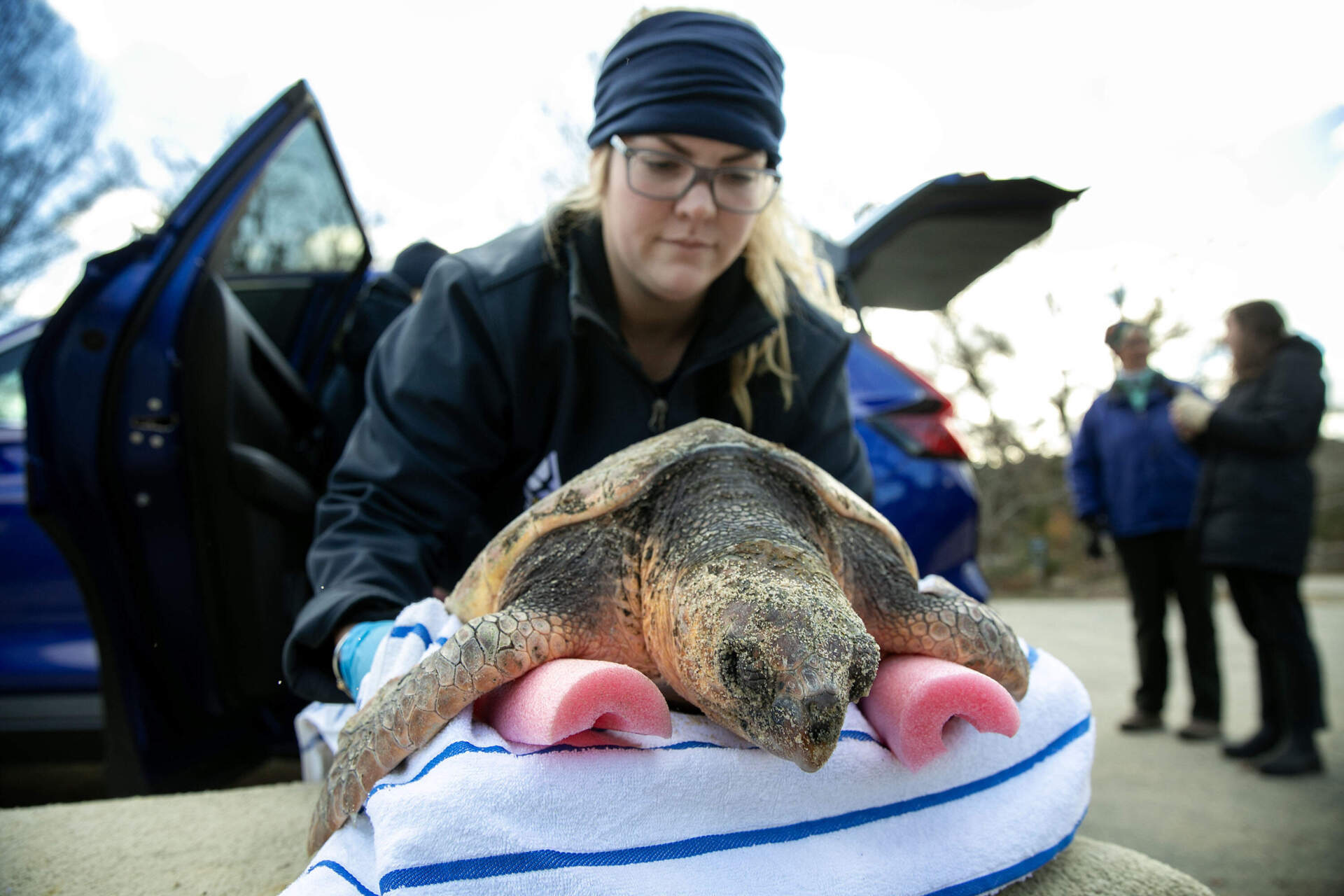
Debby Walther let out a whoop as she learned exactly how many turtles were piled into her car.
“Forty-two! That beats Bruce’s record,” she cheered, standing next to a tall gray camping van. Inside, the van was packed with 41 banana boxes — each containing a Kemp's ridley sea turtle. One loggerhead turtle was also along for the ride, but too big to fit in a box.
The lethargic turtles were in a bad way, but most would soon be working toward to recovery.
Walther and her husband, Bruce, are among hundreds of volunteers with the Mass Audubon Society's sea turtle rescue program. With operations based in Wellfleet, the organization plucks up immobilized sea turtles on Cape Cod beaches to triage and later bring them to specialized rehabs.
Turtles strand on beaches along the inner Cape every year. Most are juveniles. The hook shape of the peninsula traps the turtles in the bay, blocking their path south to warmer waters.
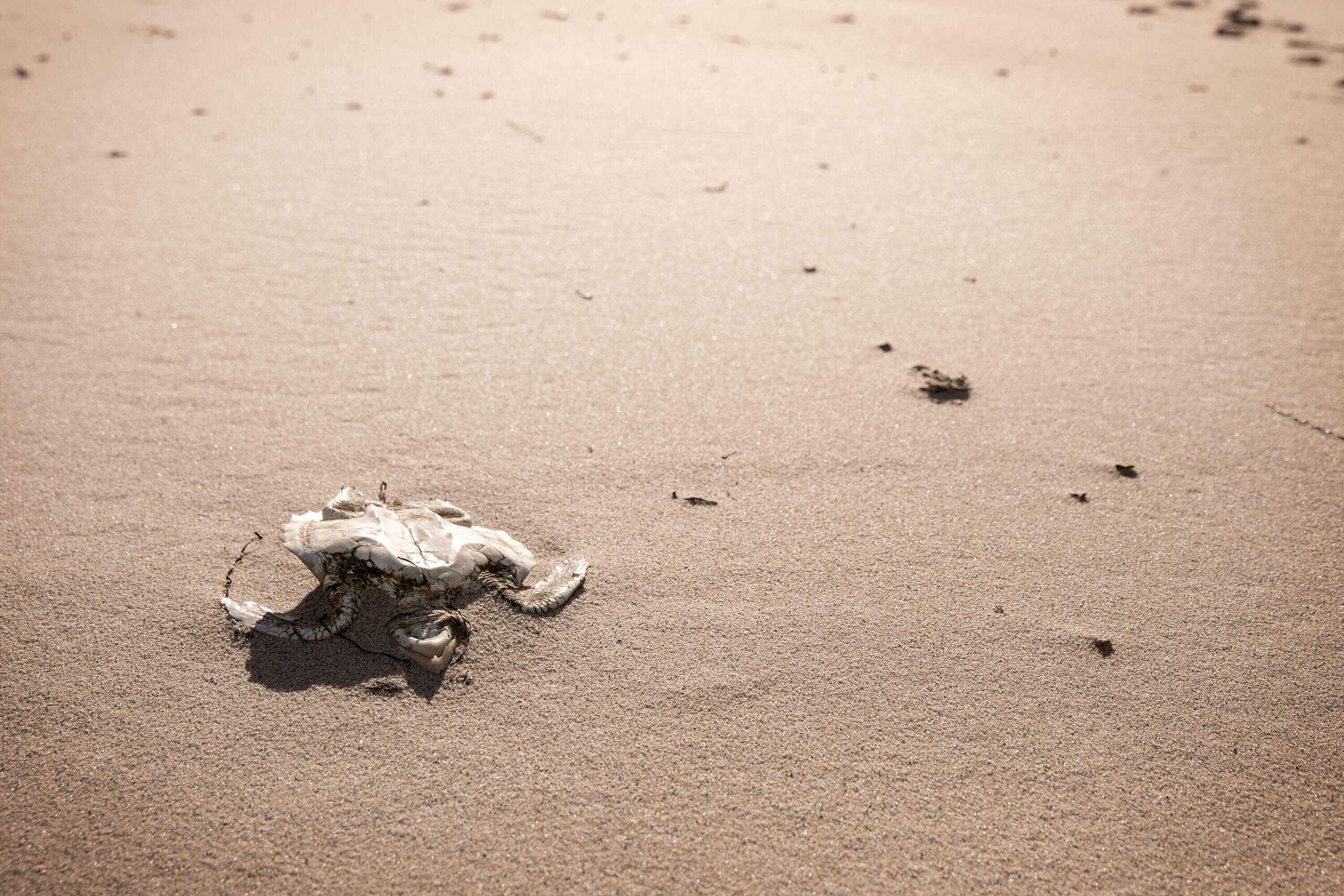
The cold-blooded creatures cannot regulate their body temperatures in chilly weather. When ocean temperatures dip below 60 degrees, turtles slow down. Under 50, their bodies begin to shut down and become cold-stunned.
"They can't swim as well, and as it gets colder and colder, they get hypothermic, just like a person would," said Mark Faherty, science coordinator for Mass Audubon Cape Cod who oversees the rescue program. "They get pneumonia, they get infections, sometimes they're wounded."
Strong winds blow the imperiled turtles to shore. Without human intervention, the turtles would die on the beach.
"... As it gets colder and colder, they get hypothermic. They get pneumonia, they get infections, sometimes they're wounded."
Mark Faherty
All three types of the sea turtles — green, loggerhead and Kemp's ridley — saved from the state's shores are endangered. Kemp's ridley sea turtles are critically endangered.
Because of their protected status, permits are required to handle them. Mass Audubon is the only federally-designated responder for sea turtle strandings in southeastern Massachusetts.
Warming seas trap more turtles
Turtles began washing up in Massachusetts in the '70s, according to Faherty. Cold-stunned turtles numbers exploded in the decades since, with the recent past reflecting the sharpest increases. Twenty years ago, a total of around 50 stranded turtles over a season was pretty standard, he said.
Now, strandings average between 600 to 800 turtles, with some years topping 1,000.
Climate change fuels this shift, as the warming waters in the Gulf of Maine draw sea turtles farther north.
"More of them used to wash in on Long Island, but now it's really all on Cape Cod," said Faherty.
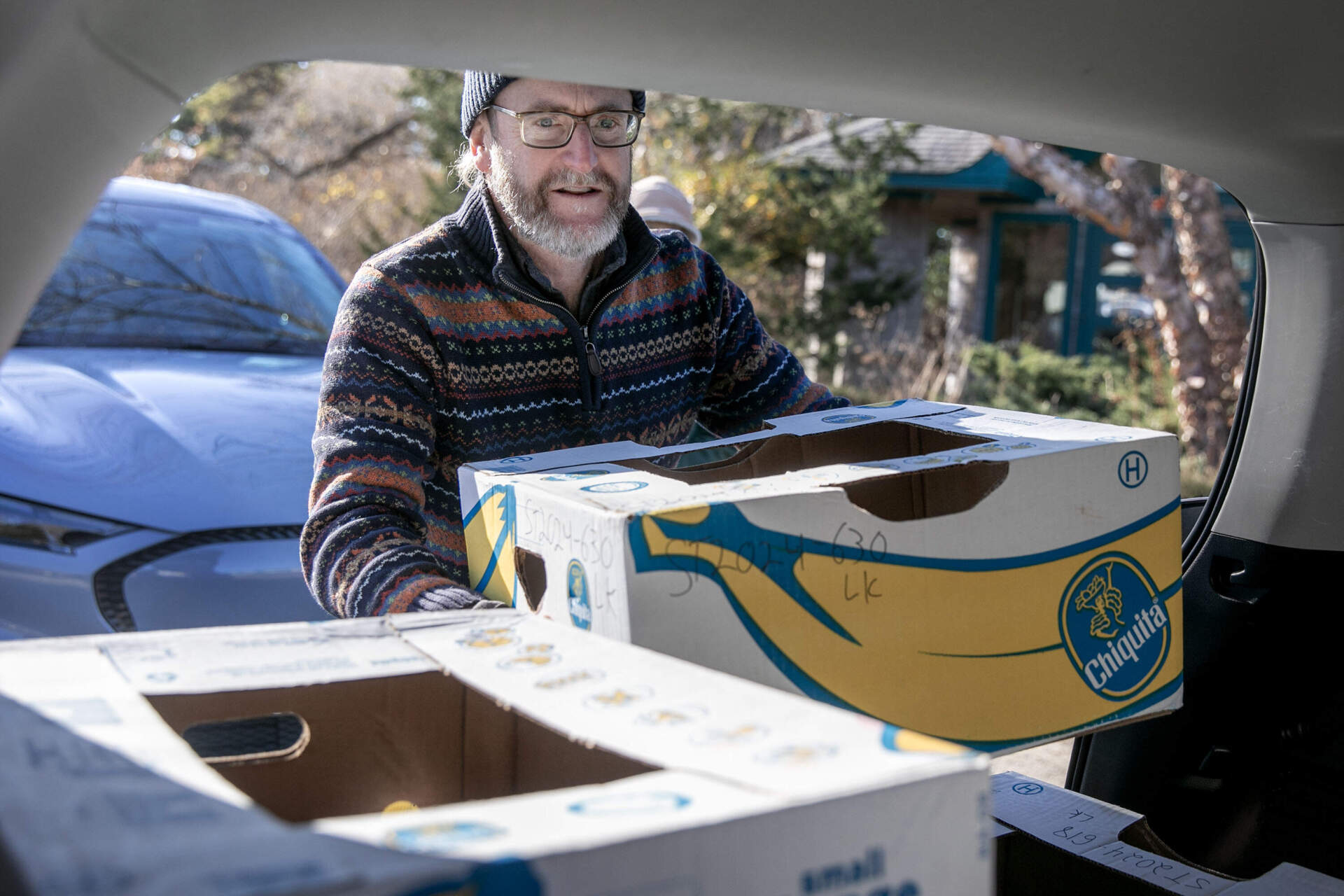
Turtles also strand later in the year, he added. Cold-stunning season used to mostly happen in November and December. Increasingly, Faherty said Mass Audubon workers see even the smallest turtles — which are more likely to succumb to freezing waters — wash up alive in January because the bay is warmer longer.
This fall was unseasonably warm in Massachusetts, but temperatures dropped and winds picked up following a Thanksgiving storm. The final days of November and the first week of December were busy for rescuers.
"The turtles have just been coming in kind of nonstop," said Micheala Wellman, a volunteer coordinator for Mass Audubon. "We've been just trying our best to break people off to sleep and eat, and take turns doing that, but it is a 24-hour operation."
Eight staffers — more than any other year — man this year's program. But it's a massive operation to run, including overseeing about 200 volunteers.
"We're just strapped pretty thin here," said Wellman, "doing our best because we love it."
Advertisement
With so many turtles washing up, the nonprofit put out an urgent donation request for towels and banana boxes, which perfectly fit juvenile Kemp's ridleys. The community brought them piles of boxes, old towels and blankets.
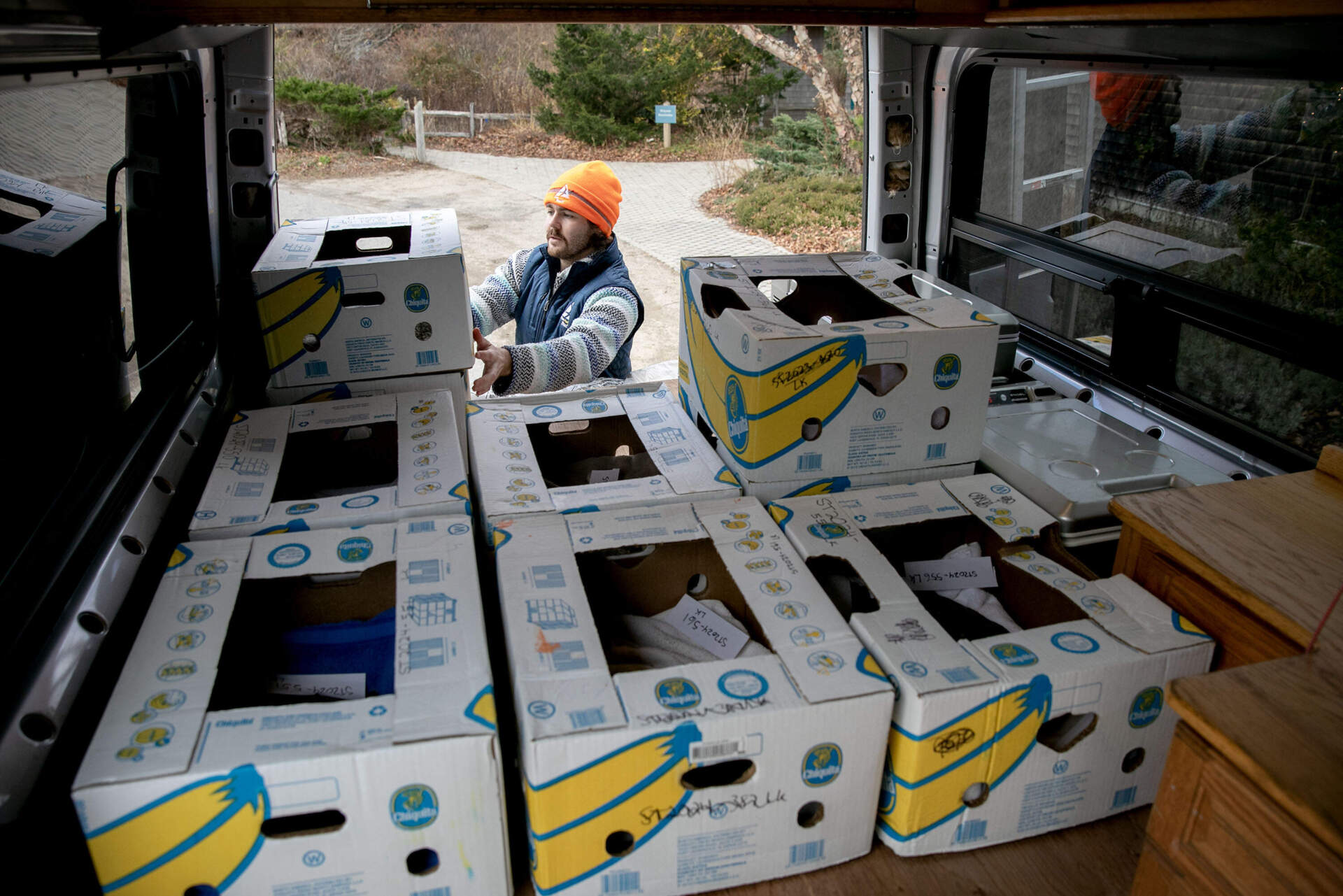
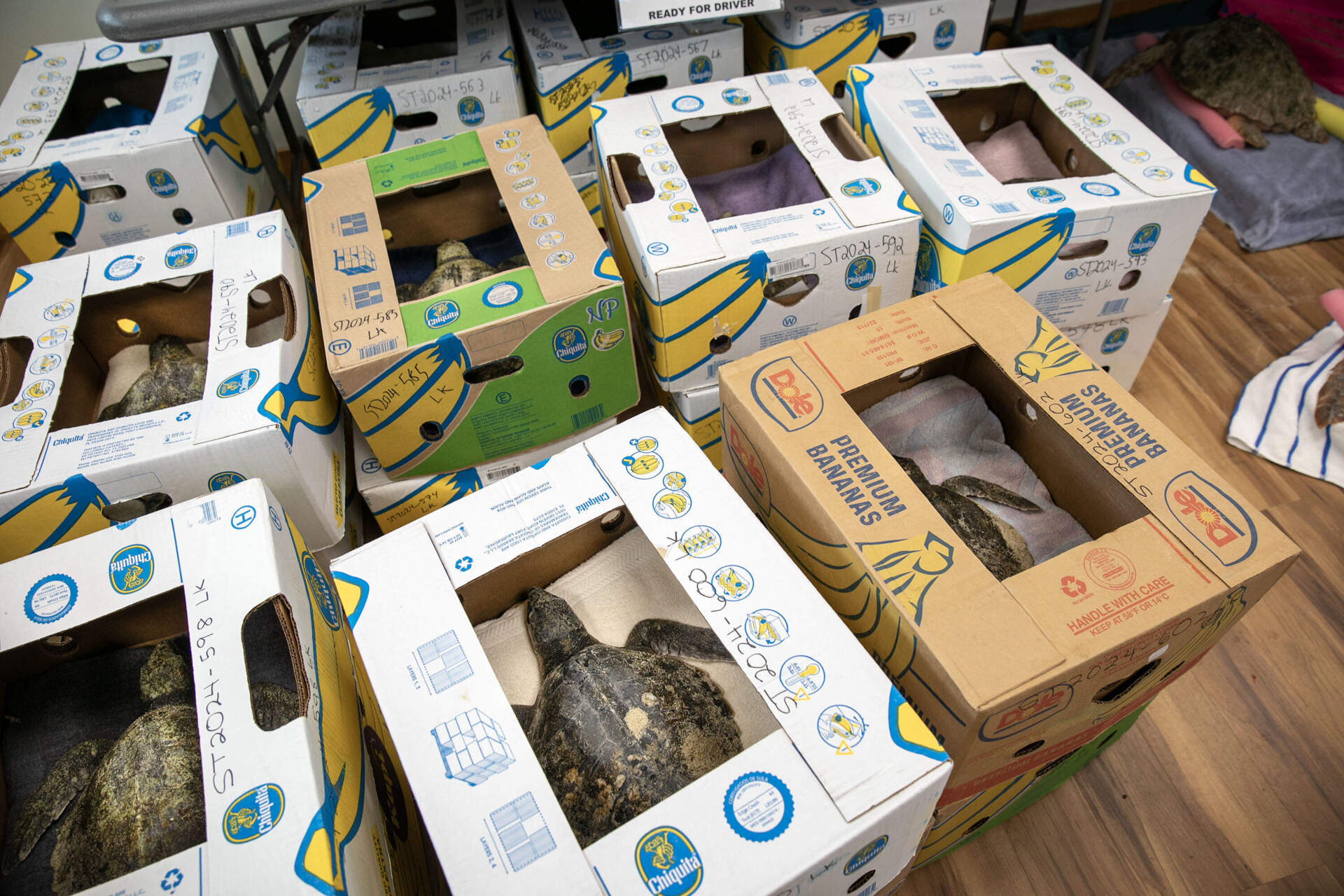
Saving and studying turtles
On Dec. 6, temperatures sat in the low 30s with a real-feel in the teens. Wind gusts up to 35 mph whipped across inner Cape beaches.
Calls came in at a steady clip to the Audubon's stranded turtle hotline. Manned 24/7, staffers take the reports and dispatch colleagues to scoop up the sea critters.
Ben Chester, a volunteer coordinator who helps monitor the hotline, predicted that it would be a "100 turtle day." All told, 141 turtles were brought to the sanctuary Friday.
"The turtles have just been coming in kind of nonstop."
Micheala Wellman
When cold-stunned turtles come in, they're given a number and basic medical exam. The processing room is kept at 55 degrees, as heating the turtles too quickly can send them into shock. Noise is minimal as staff stretch measuring tapes along turtle shells and jot down health observations.
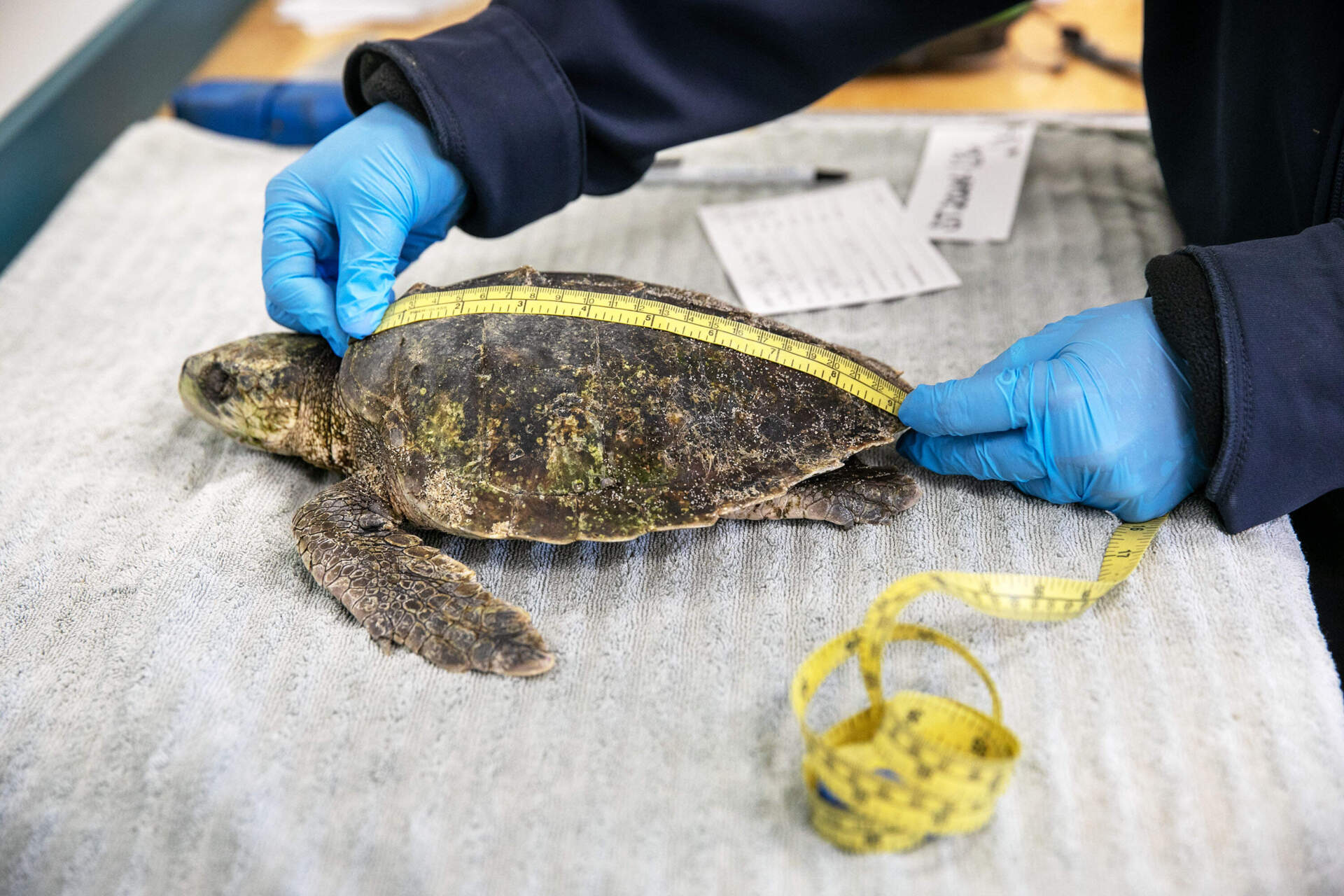
The data gets shared with rehabilitation centers, like the New England Aquarium's Sea Turtle Hospital in Quincy, which deliver the bulk of the care. Hospital-bound turtles typically are transported from Wellfleet two times a day.
"The weight is really important because they can get drugs ready for them when they get there, they get fluids and vitamins and sometimes antibiotics," explained Wellman. "We take a good look externally to see if there's any injuries. We'll note that so that they're aware if there's anything serious, we can send them photos ahead of time so they can plan for that."
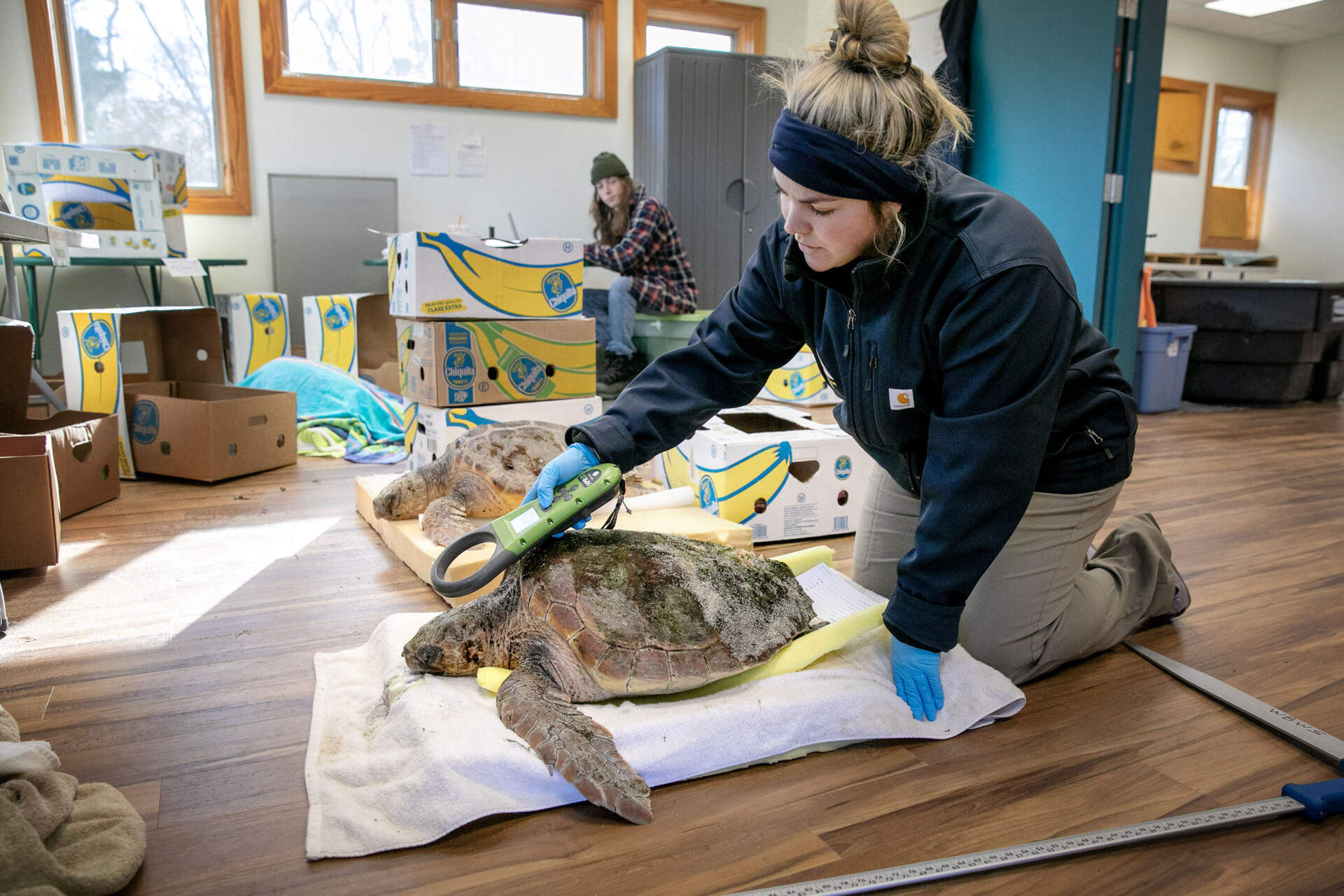
Turtles pronounced dead at the Wellfleet sanctuary are kept frozen until they are necropsied in the late winter and spring. The data collected is used by a network of researchers, and Faherty described it as a "rare opportunity" to examine the endangered juvenile turtles. The findings, he said, offer a wealth of information.
"What kind of things are living on the turtles? Can we look at stable isotopes to see where they are in the ocean before they get here? Parasite loads?" he said. "There have just been all of these different people who come around for these necropsies."
Out in the elements, rescue walkers keep their eyes trained on the sand. Clumps of seaweed or rocks are misleading from a distance, especially at night.
"It's actually easy to miss them even with a good, strong flashlight," said Faherty. "It's intense focus. In addition to the physical exertion, it's a lot of mental exertion."
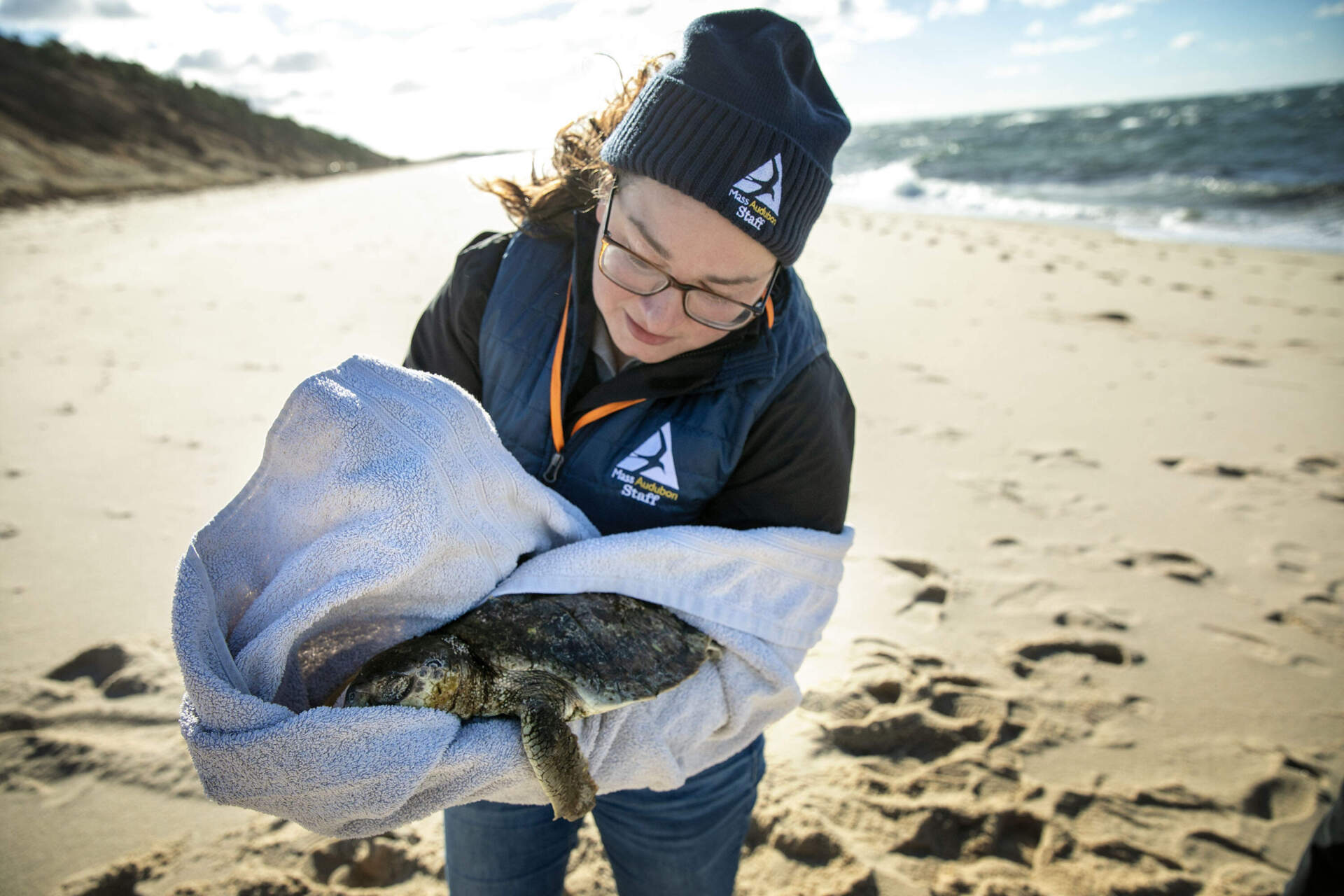
When found, the rescuers carry turtles gently in a towel — or pull them on plastic sleds if there are too many to hold. Inside their vehicles, they keep the music off and their voices low during the turtles' ride to the sanctuary.
"It's incredible what our volunteers do for us," said Faherty, describing dark 2 a.m. tide walks and long transport drives. But he said the satisfaction of rescuing the vulnerable creatures makes it worth while.
"With most endangered species, it's like, 'stay away, we don't want to disturb them.' " Faherty said. "This is an opportunity for people to pick it up, save its life — and then go out and do it again."
